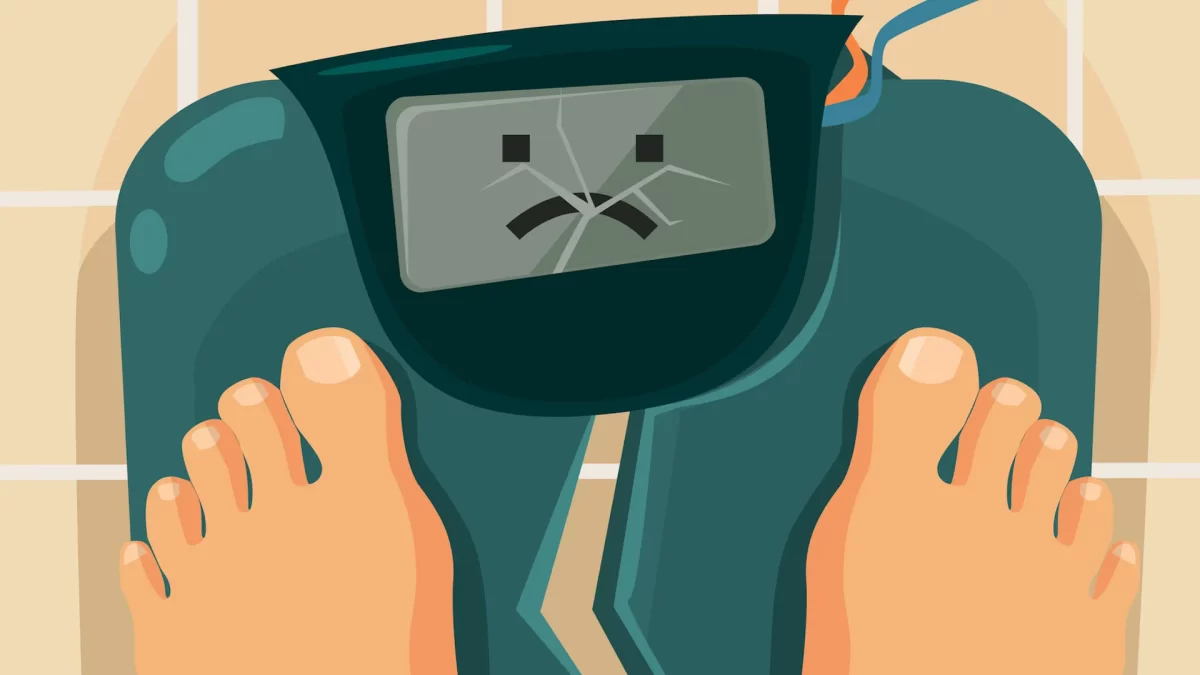Wrestling and gymnastics are two completely different sports, yet one aspect ties them together: dieting. Dieting is a huge part of wrestling because a wrestler’s weight determines what weight class they are a part of. For gymnasts, good nutrition can potentially prevent stress fractures, low energy and hormone imbalance. However, many organizations and coaches take these dieting restrictions too far, which inevitably affects these athletes’ physical and mental health in and out of season.
Many gymnasts and wrestlers at the high school and professional level have a history of struggling with eating disorders such as bulimia, binge-eating and anorexia. Gymnasts and wrestlers are at a higher risk of such eating disorders due to the conditions of those sports. Four-time gymnast Olympic medalist, Shawn Johnson, limited herself to only 700 calories leading up to one of her Olympic performances at just 16 years old. The average 16 year old female consumes roughly 2,200 calories daily. While practicing four hours a day, Johnson would only consume the amount of food needed to keep her from passing out. She continued this way for many years. Not telling her coaches or her parents about her eating habits, Johnson struggled in silence. Johnson’s complicated relationship with food began when she was 14 years old and lasted until her early 20s.
As Johnson stated in her interview with journalist Alex Lieberman, “There was almost this flaw in people’s thinking that since we were children, we don’t need the professionals that adults need,” Johnson said. “So we don’t need nutritionists, psychologists, like, all of those people protecting us, when it should be the reverse.”
Johnson stopped competing in gymnastics after her final meet at the 2008 Summer Olympics as a part of team USA. After Johnson retired from her gymnastics career, she went through an identity crisis. She was seeing comments all over social media about how she does not look like the competitor she used to be and how she looks like she ‘gained weight’ which drew her right back into her old, malnourishing eating habits.
Many people do not realize the harsh and demanding diet of gymnasts and can overlook the side effects. Antioch Community High School Alum, Emily Kaluzinski, competed in gymnastics for 14 years and agrees that the gymnastics culture is very wearing and causes issues with health and dieting. Dwelling on the fear that Kaluzinskis’ coaches and peers would judge her by the way she looked, her diet consisted mostly of fruit, yogurt and granola or very healthy snacks for a long amount of time. She felt as though she was never good enough because she did not look a certain way and that fear totally affected her mindset going into competitions. Kaluzinski struggled for many years because she did not want other people to worry about her. Eventually, she did start talking about her problems with her close friends and family and has gotten better with their help.
“It used to be all about how gymnasts are supposed to be skinny and to ‘suck in,’ which definitely causes many girls to develop health problems,” Kaluzinski said. “If younger gymnasts are struggling, they should talk to people they trust because it really helps. They also should know that it is okay to eat and crazy diets and starving yourself are not healthy.”
The extreme dieting that is present in gymnastics also exists in wrestling. Wrestling is a very diet involved sport because of the way it has been established. Wrestlers are put into set weight classes ranging from about 20 Lbs each class. For example, a wrestler weighing 135 Lbs could be wrestling someone ranging from 120 Lbs or 140 LbS. Before each wrestling match, the competitors have to go through weigh-ins which can be especially traumatic for those bordering the cutoff lines. Participants will cut calories, over-exercise and fast to make their weight class.
Senior James Kasprzak started wrestling when he was five years old and continues to wrestle for the ACHS wrestling team. Kasprzak has gone through many different diets to try and find which one would suit him best. One of the diets he tried consisted of only eating eggs and chicken, which led him to not even be able to tolerate the smell of chicken to this day. Kasprzaks’ diet has changed through the years, yet now on a less strict diet, it still consists of eating a lot of salads and proteins.
Going into matches, the food an individual eats has a huge impact on their performance. Kasprzak stays away from most fast food restaurants and is always watching what he eats before he competes.
“I believe that having a certain diet for the wrestling season is good,” Kasprzak said.
“You can’t be eating crap or you’re going to perform like crap.”
Though every sport encourages its athletes to maintain a healthy lifestyle, some wonder if wrestling and gymnastics possibly take it too far. It has always been the expectation for gymnasts and wrestlers to know their weight on the scale because cutting has always been infused into their culture. Though this is not the case for everyone, many athletes have started to speak out about their toxic experience with their sport and how it caused them life-long health problems. Younger athletes need to know that it is okay to speak out if they are struggling and the establishments of gymnastics and wrestling need to do a better job in supporting their athletes and their needs.











